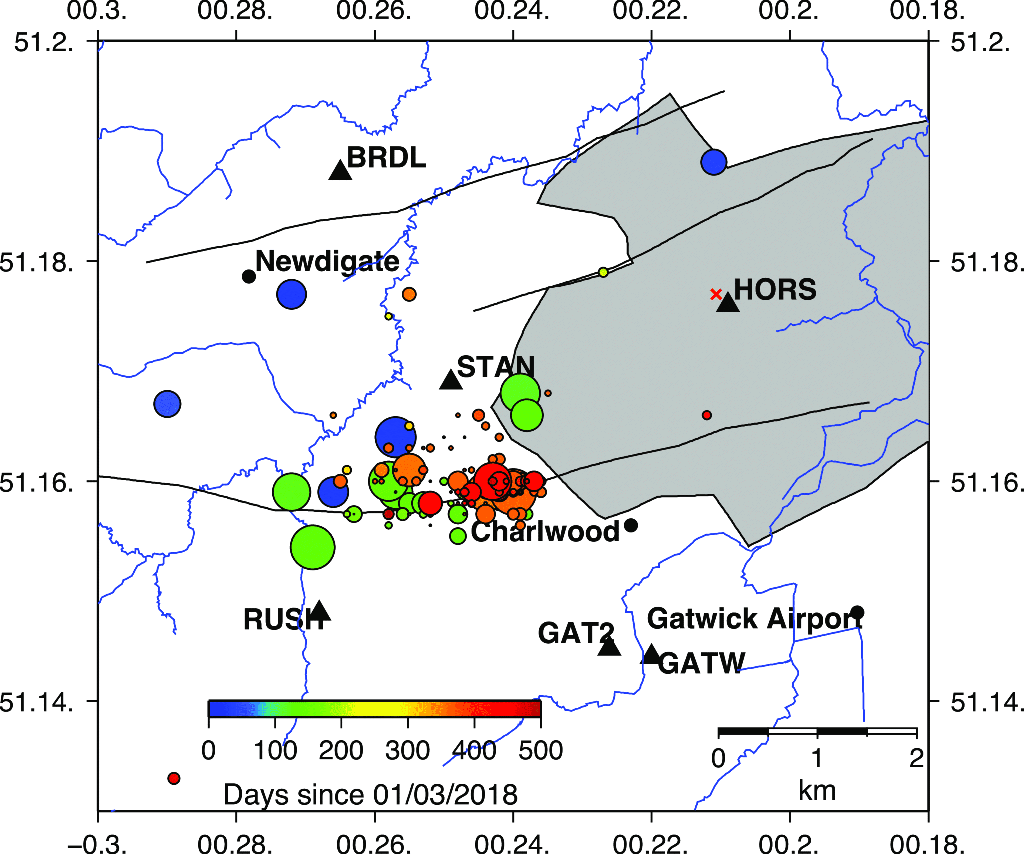Oil extraction likely triggered over 100 earthquakes in the UK.
In 2018 and 2019, residents of Surrey County in southern England experienced a series of underground tremors. Over the course of a year, more than 100 events were recorded. The magnitude of these earthquakes ranged from 1.34 to 3.18 on the Richter scale — relatively low values that do not cause significant damage. At that time, people reported that their homes were "shaking for a few seconds."
During this period, there were heated debates regarding the cause of the tremors. Some experts suggested that drilling activities by the oil company UK Oil & Gas triggered mini-earthquakes, although this view was quickly refuted by scientists. The epicenter was located 5-10 kilometers away from the Horse Hill drilling site, which, according to experts, is too far for a classic scenario of induced seismicity. Staff from the British Geological Survey conducted a study and confirmed that the earthquakes were due to natural processes rather than human activity.
Recently, geologists Matthew Fox (Matthew Fox) and Philip Meredith (Philip Meredith) from University College London challenged the conclusions of their colleagues at the British Geological Survey. The scientists utilized the latest data on rock composition in Surrey County and concluded that the underground tremors were indeed caused by oil extraction. They presented their findings in an article published in the journal Geological Magazine.
Fox and Meredith conducted over a million computer simulations that accounted for local geological data, oil extraction volumes, and the location of the earthquake epicenters. Their calculations revealed a temporal correlation between oil extraction and the earthquakes, which was more evident than previously suggested based on earlier data.
Extracting oil from deep layers induces changes in pressure within underground structures (the pressure in the extracted layer decreases). These changes can lead to shifts in rock formations and, consequently, to earthquakes. Geologists identified differences in how rocks respond to pressure changes based on their composition. In porous Portland limestone, pressure changes propagate almost instantaneously, causing earthquakes to occur within a few days. In contrast, in dense Cambrian clay, the process occurs with a noticeable delay, resulting in tremors happening several tens of days later.

Representatives of UK Oil & Gas stated that the question of their involvement was settled several years ago when the British Geological Survey concluded that natural causes were responsible for the earthquakes.
The company UK Oil & Gas controlled oil extraction at the Horse Hill site until October 2024. Operations were suspended following the revocation of their license due to a legal dispute initiated by activists.
In their study, Fox and Meredith raised an important question: how thoroughly do people assess the potential risks of mineral extraction? Human activities aimed at exploiting oil fields may have a far greater impact on our planet than previously thought.
It is noteworthy that cases of so-called induced seismicity related to oil and gas extraction are observed not only in the UK but also in other regions of the world. A sharp increase in seismic activity has been recorded in the central United States since 2009, following the injection of large volumes of liquid into the earth to extract resources.
For instance, the magnitude of the largest earthquakes caused by human activity in the US reached 5.3 (Trinidad, Colorado, August 2011) and 5.6 (Prague, Oklahoma, November 2011) on the Richter scale.
In 2017, a 5.4 magnitude earthquake occurred in South Korea. This event was triggered by the injection of water underground for geothermal energy extraction (heat from the Earth's interior). The well through which the water was injected was located four kilometers deep, directly above a geological fault, which could have induced stress in the Earth's crust and led to tremors.